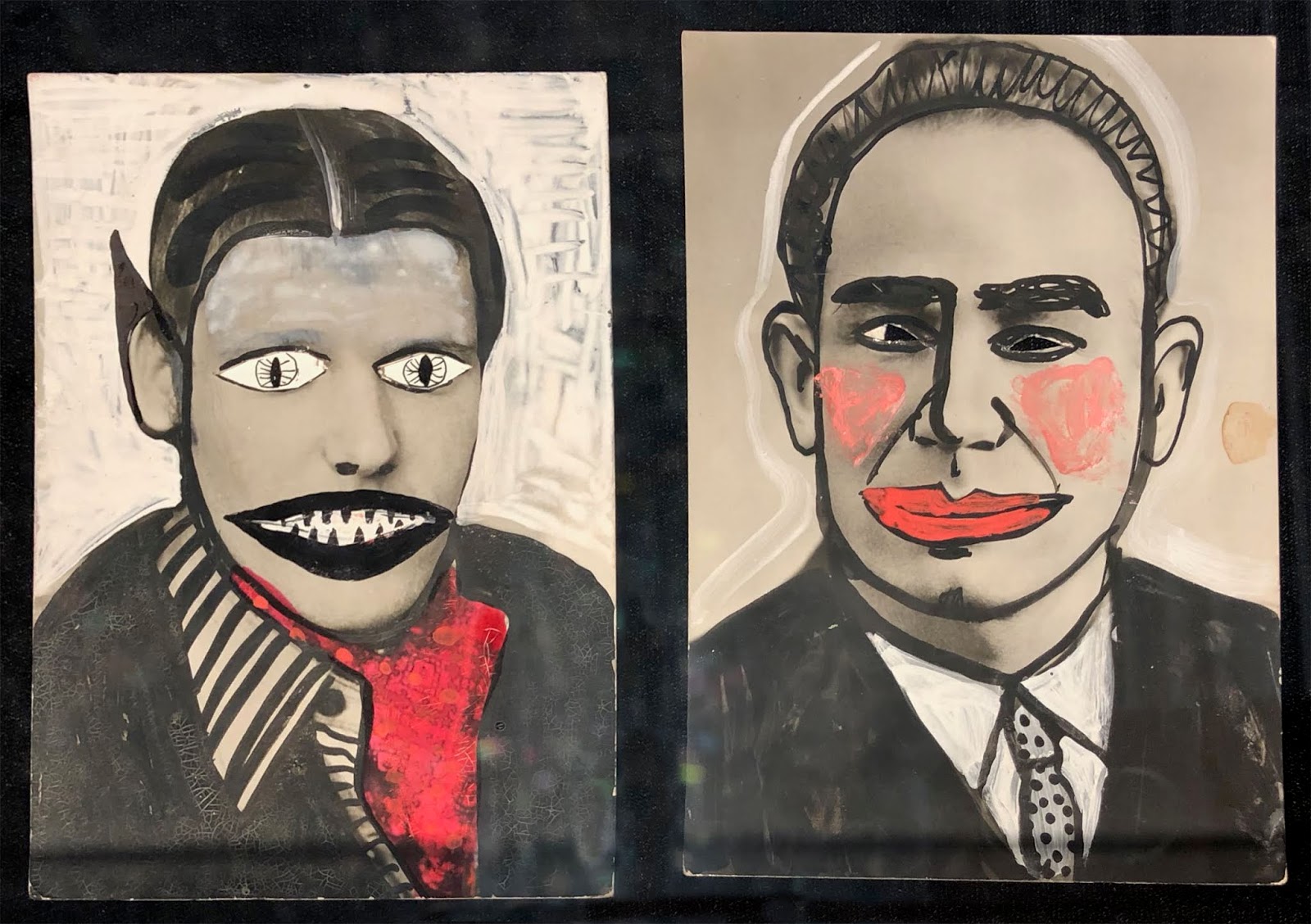 |
| Painted postcards by Christine Schlegal, 1973 |
It's been 30 years since the fall of the Berlin Wall. The Wende Museum is marking the anniversary with "The Medea Insurrection: Radical Women Artists Behind the Iron Curtain." It's an ambitious survey of dissident art created by women in the Eastern Bloc of the 1970s and 80s. Curated by Susanne Altmann, it originated at the Albertinum, Dresden.
 |
| Magdalena Abakanowicz, La Seur, 1979 |
Near the entrance is a 1979 fiber piece by Magdelena Abakanowicz. The artist (who taught at UCLA in 1984) is one of the few here familiar to Westerners. Abakanowicz's Poland was relatively open to the global avant garde. For the most part, however, "Medea Insurrection" explores unfamiliar territory. It spans performance, textiles, costumes, painting, photography, and prints.
 |
| Evelyn Richter, Gatekeeper at City Hall, Leipzig, about 1975 |
East Germany was among the more repressive regimes for artists. Much of the dissident art was small, even postcard size, so that it could be cleared away quickly in the event of a secret police raid. Ironically photographers had greater scope to experiment than other artists because photography was not officially recognized as art. Evelyn Richter's
Gatekeeper at City Hall, Leipzig (about 1975) has the uncanny quality of a George Tooker. Also from Richter is the trippiest self-portrait in the show, documenting a performance. It's a chronological outlier from 1952.
 |
| Evelyn Richter, Self-Staging, University Dresden (TU), 1975 |
 |
| Doris Ziegler, Self in a Mirror, 1986 |
Another self-portrait, by the painter Doris Ziegler, recalls the Post-surrealism of Helen Lundeberg and the unflinching eye contact of Dürer.
 |
| Doris Ziegler, "Rosa Luxemburg" Work Team, Portrait Eva, 1975 |
Ziegler ought to be far better known.
"Rosa Luxemburg" Work Team, Portrait Eva tweaks Socialist- and Magic-Realism. Rosie the Riveter wonders if that's all there is. The black metal shavings on the mauve ground form an abstraction of the sort officially condemned.
 |
| Karla Woisnitza, Woman, 1987 |
 |
| Gabriel Stötzer, Sheep Wool Mask and Suit, 1987 |
Fashion, in the Western sense, was also damned as bourgeois decadence. Collectives in Berlin and Erfurt created absurdist costumes literally out of trash. They were exhibited in low-budget, contrarian fashion shows and Super 8 movies.
 |
| Installation view with Hanne Wandtke's "Garbage Costume" from The Top of the Meat Mountain, 1986 |
The Wende's version of "The Medea Insurrection" incorporates new work by three L.A. artists referencing the Cold War era: Chelle Barbour, Lezley Sarr, and Sichong Xie. Barbour has created collages from objects in the Wende collection.
I, Spy mordantly references Cold War tradecraft, Afro-colonial modernism—and a 1960s TV series starring Bill Cosby.
 |
| Chelle Barbour, I, Spy, 2019 |










Comments